Kaitiaki Davis Apiti has devoted the last 22 years of his life to protecting the Māui dolphin that is on the brink of extinction.
The critically endangered Māui dolphin, or Pōpoto, is a subspecies of the already endangered Hector’s Dolphin. Their habitat is along the West Coast of the North Island, from Maunganui Bluff to Whanganui, and there are only 54 left.
“Now we're seeing the results of fishing and the destruction that it has caused through this taonga and how we're going to lose it and we really don't want that to happen. We really don't,” says Apiti who lives in Aotea Harbour near Kāwhia, also part of the Māui dolphin habitat.
Fishing, diseases, oil and gas exploration, boat strike, mining, tourism and noise are all threats to Hector’s and Māui dolphins. Davis is most concerned about commercial fishing and wants it banned from dolphins' habitat 20 nautical miles offshore along the West Coast, at a depth of 100m.
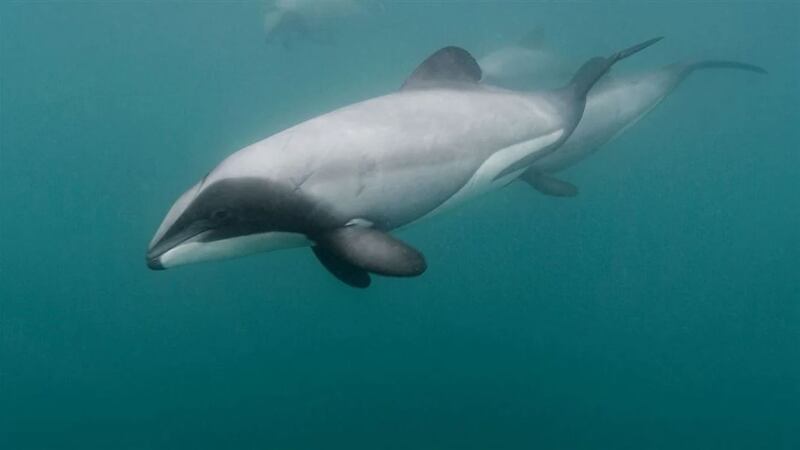
The Māui dolphin has a nationally critical conservation status, with only 54 estimated to be left over the age of one year. Source: DoC
'It's like waiting for a tangihanga'
He’s been calling for the ban since 2008 when Ngāti Te Wehi lobbied the Crown over protecting the Māui dolphin habitat. Apiti says the decline in numbers is like “waiting for a tangihanga to happen.”
“You're crying because you know it's going to happen and you don't want it to happen. But it's going to happen and you've got to try and deal with it because the people that are taking care of it aren't taking care of it.”
In 2016 Davis took a case to the Waitangi Tribunal for Ngāti Te Wehi, claiming the government's policy on the protection of the Māui dolphin breached Te Tiriti o Waitangi. But the claim was rejected.
“I was gutted. We were devastated at the response.”
New threat management plan introduced
There was an upside to the claim. A new threat management plan was introduced, by the Department of Conservation and Fisheries New Zealand, banning commercial drift net and trawling within four miles of the shore, even though Ngāti Te Wehi wanted a 20 nautical mile limit.
But Apiti says the reduced limit is a political compromise with the fishing industry. “It's money. It boils down to money at the end of the day,” he says.
The plight of the Māui drew national and international attention. In 2020 DoC and Fisheries reviewed the TMP and pushed the protection zone out to 12 nautical miles but still not the 20 miles Ngāti Te Wehi and others were demanding.
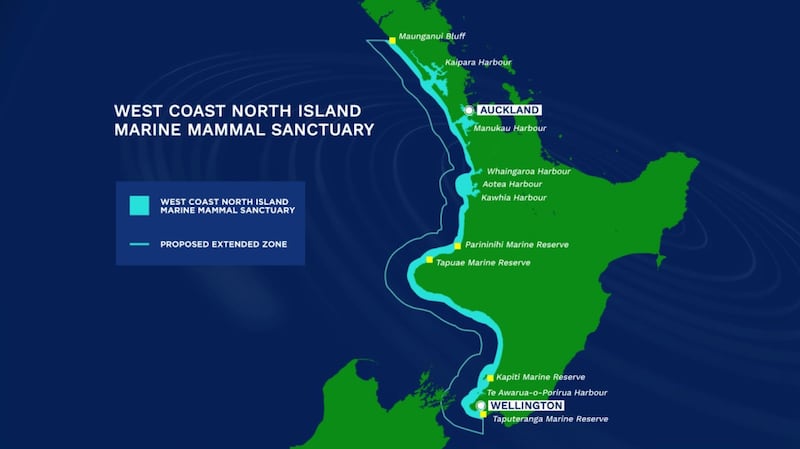
Davis wants a 20 nautical mile protection zone along the West Coast instead of the current 12. Source: File
Pushing industry profits over dolphin survival
University of Otago Department of Zoology Professor Liz Slooten says the TMP didn't extend the protection zone to 20 miles offshore to make a compromise between pushing industry profits and dolphin survival.
“International experts have been urging New Zealand to protect Māui dolphins to at least 20 nautical miles offshore but so far the politicians have always compromised between that advice and the interests of the fishing industry.”
Fisheries New Zealand’s spokesperson Emma Taylor said all of the measures in the latest 2020 TMP were supported by science.
“The scientific evidence does not support a 20 nautical mile ban for set netting. Under the current measures, which ban set netting out to 12 nautical miles in the main distribution area for Maui dolphins, the science tells us that any risk from fishing is almost completely removed,” Taylor said in a statement.
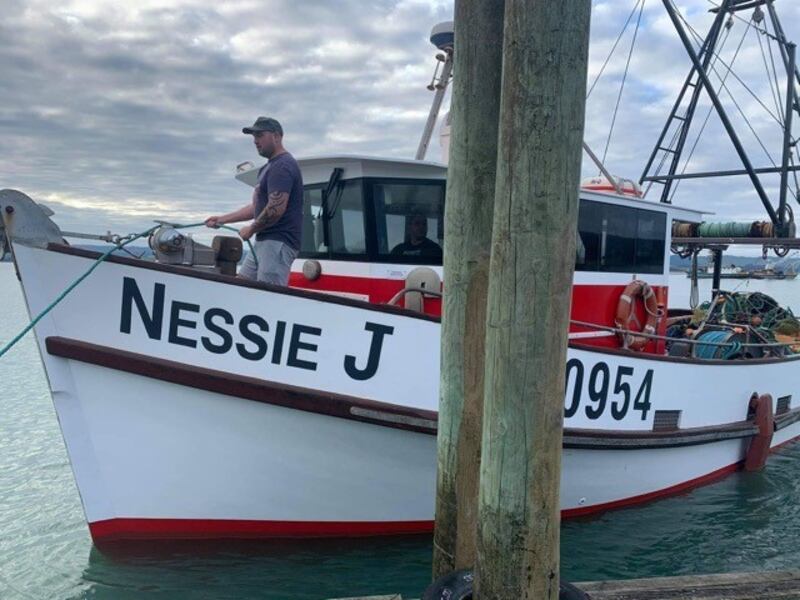
If the protection zone were further extended to 20 nautical miles Brooks says it would cause a huge financial blow to his business. Photo source: Ali Brooks
Support for Māori fishermen made a priority
At the time of the review of the 2020 TMP, four iwi fisheries forums were consulted from the west coast of the North Island.`
One of the iwi fisheries forums was Ngā hapū o Te Uru o Tainui representing the coastal hapū of Ngāti Maniapoto and Waikato.
Kāwhia commercial fisherman Ali Brooks is a part of Ngā Hapū o Te Uru o Tainui. He said during the consultation of the TMP, all the fisheries forums agreed measures should be in place to help the dolphins but they had a priority to protect Māori fishers as well.
“A lot of that support was shaped around ensuring that the ministry supported us [fishers] if these measures come in and they impact our livelihoods.”
If the protection zone was further extended to 20 nautical miles, Brooks says it would cause a huge financial blow to his business, which has already taken a hit. When the 12-mile limit was enforced, he had to shut down.
“It just became unable to sustain in the fishery. So we joined another whānau up here in Kāwhia Moana and we transitioned to trawling... If, for example, we were to be put out of the business now, by any further measures, it's a well over a million dollars of rendered useless assets.”
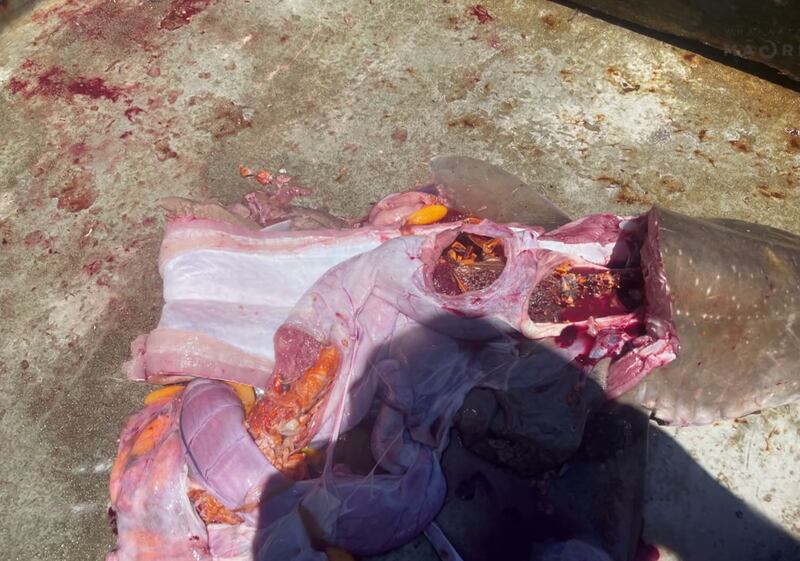
Juvenile koura found in Rig Shark's stomach. Source: Ali Brooks
Biodiversity impacts
Brooks is worried about biodiversity impacts. Since the 12 nautical mile ban, Rig Sharks are coming closer inshore and are eating more crayfish.
“We're seeing it on the boats when we dress the shark. There are juvenile koura inside all of these rigs' stomachs. From what we’re seeing it's at a higher rate than human take.”
He says he would rather see a balanced fishery protecting all stocks.
“Including the Māui dolphin but on a realistic scale because I don't think we should be sacrificing koura and other stocks for a perceived threat that I don't believe is as bad as it's being made up to be.”
Brooks is also more concerned about the number of Māori fishermen working along the west coast. He can count only several who are still in the line of work.
"If we are counting numbers of dolphins versus Māori fishermen, we are far more at risk of being extinct. Some people would say things like, 'Oh, but commercial, that's a Pākeha concept'. We've been fishing for our people in our villages for as long as we got here. The commercial term is something that was placed upon us. We are traditional Māori customary fishermen at heart."
'This is not tikanga'
But Apiti says it is not tikanga for Māori to want to fish in an area that should be protected for the survival of their taonga.
“Unfortunately it's our own Māori people that want to continue fishing in the way that we shouldn't be fishing. This is not tikanga, You're destroying something. That's not tikanga because you're not doing it properly.”
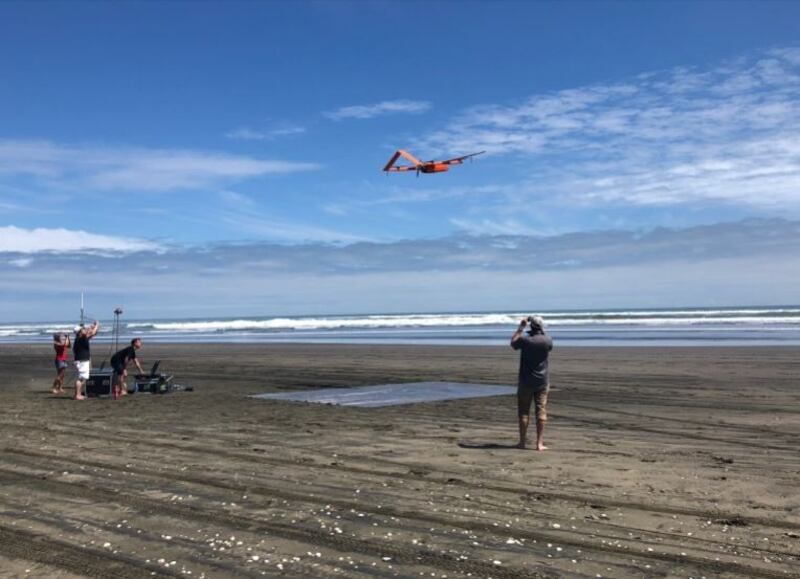
Academics, the government and companies are working together on the drone project in a bid to save the rare dolphin. Source: MAUI63
Cameras on boats and drones 'not enough'
Brooks is one of many fishermen required to have cameras on their boats as a new protection measure for Māui dolphins. There are also drones designed to locate the dolphins. But Slooten says the cameras and drones are nowhere near enough.
“Cameras on boats don't do anything to stop dolphins dying in fishing nets. They just count the dead dolphins and drones are even less effective because they only see a very small part of the population of dolphins at any one time. So it's totally unrealistic to think that drones can protect dolphins,” she says.
“We really need to focus on stopping those avoidable dolphin deaths now and that's best done by removing fishing nets from their habitat.”
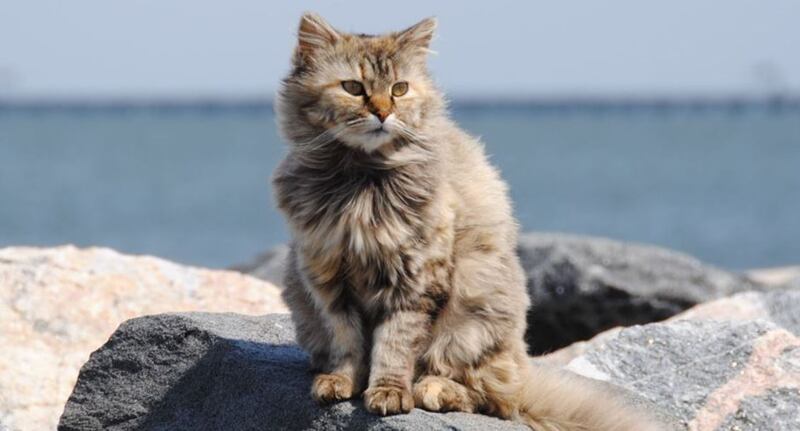
A parasitic disease that reproduces in cats could be spreading the deadly parasite infecting Māui dolphins. Source: DoC
Toxoplasmosis from cats killing the dolphins
Adding to the mix is another theory about why Māui dolphins are disappearing - potentially toxoplasmosis, a parasitic disease that reproduces in cats. DoC has put almost $5 million into investigating whether cat faeces leaching into rivers and waterways are spreading the deadly parasite infecting Pōpoto.
DoC science adviser for marine species Anton van Helden says Doc has been running an extensive programme by Massey University veterinary pathologists to study dead dolphins.
“We look for the cause of death and through that, the discovery of toxoplasmosis, as a cause of death was indicated. We found that between 2007 and 2011, 25 percent of all the carcasses or the dead dolphins washed on the shore that were examined had died of toxoplasmosis.”
But there’s no definitive finding on toxoplasmosis yet and how domestic cats may be poisoning dolphins and not everyone is convinced.
Slooten says, “Lots of dolphin populations around the world have been tested for toxo and they all have it and it's usually a secondary infection. So, in most cases, the animal is already dying from another disease that's much worse or they're dying of old age.”
But Van Helden says DoC has to use the available information that they’ve go to help the dolphins.
“It's certainly a very high prevalence of the parasite within these dolphins and the high number of dolphin deaths from this parasite means that it's something that we do have to take very seriously.”
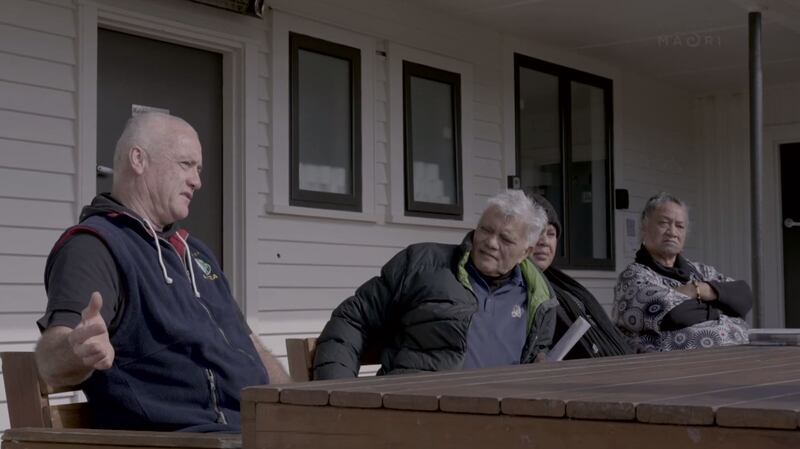
Apiti and his whānau, including his uncle Miki, discuss the way forward for protecting their taonga. Source: FIle
Mātauranga and tikanga Māori the way forward
Back in Aotea Harbour, Apiti and his whānau are looking toward mātauranga and tikanga Māori as the way to protect their taonga.
“We would start training our kaitiaki up to go out and patrol. We would put rāhui and all of the Māori techniques that were used in our tipuna's time to place over areas.”
Though protecting the Pōpoto is a kaupapa shared between members of Ngāti Te Wehi, it’s Apiti who’s leading the way on his family's behalf.
His uncle Miki Apiti says, "Tino koa. Mai ra ānō, mai rā ānō ko mātou tēnei. Tōnā kaha ki te whawhai me te whawhai i a mātou ki a haere ki te āwhina i a ia."
"We are very proud of his (Davis’) strength to keep fighting and for the strength of all of us to keep fighting to help support him."
Apiti's nephew Douglas Panapa Mahara says his uncle has had a huge impact in his life "and others around here whānau as well. He's taught me a lot within kaitiakitanga. Just being strong, standing firm and just having a voice."
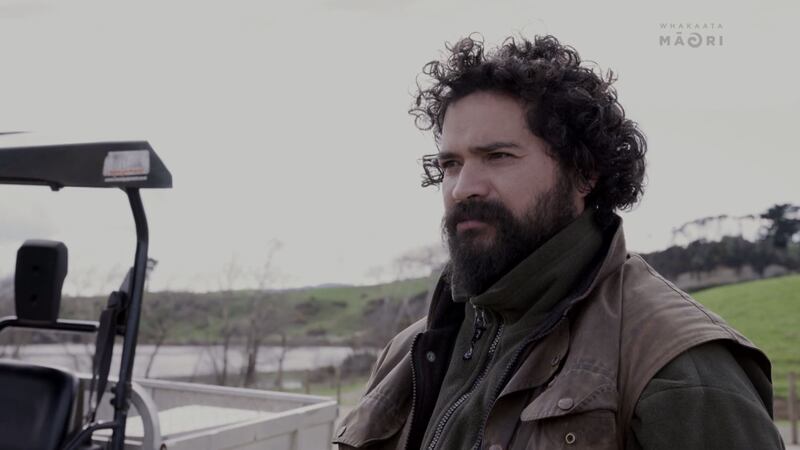
Apiti's nephew Douglas Panapa Mahara says his uncle has taught him a lot about kaitiakitanga and how to stand firm. Source: File
The fight will continue
Apiti says if the Māui dolphin does become extinct in his lifetime it would be “crushing”.
“It's crushing to think that I'm going to see that happen and I think I will see that happen. I'm preparing myself slowly," he says.
“It's a battle only a certain few will fight and continue to fight. And 22 years, it's been a tough battle. It's been a very, very tough but we know that we are there till the end - we're there till the end.”


